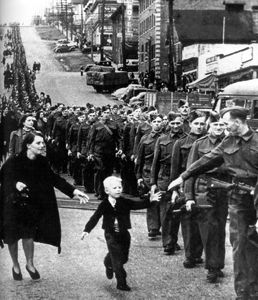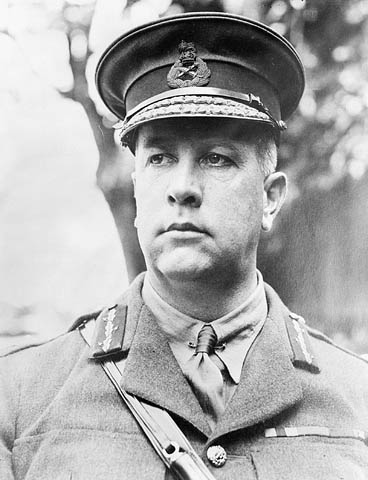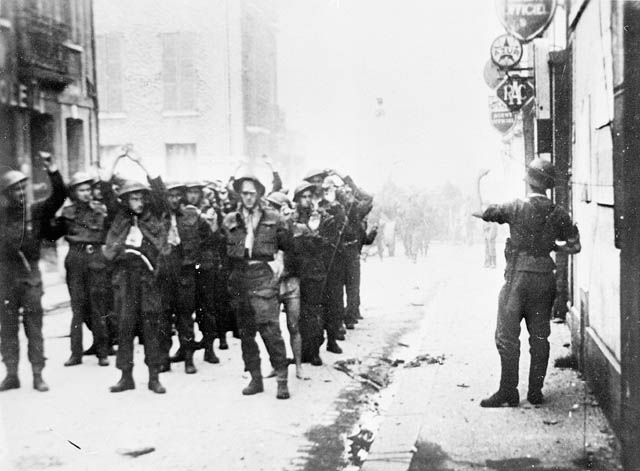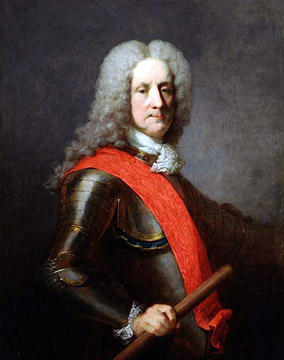Article
Canada's Road to the Second World War
As the threat of another world war loomed ever larger, Canadians, far from the conflict, would face a difficult choice of whether to stand again with Britain or remain isolated and safe in North America.

Enter your search term
Signing up enhances your TCE experience with the ability to save items to your personal reading list, and access the interactive map.
Create AccountArticle
As the threat of another world war loomed ever larger, Canadians, far from the conflict, would face a difficult choice of whether to stand again with Britain or remain isolated and safe in North America.
"https://d3d0lqu00lnqvz.cloudfront.net/media/Twitter_Cards/Wartime leaders.jpg" // resources/views/front/categories/view.blade.phphttps://d3d0lqu00lnqvz.cloudfront.net/media/Twitter_Cards/Wartime leaders.jpg

Article
More than 2,800 trained civilian nurses enlisted with the Canadian army during the First World War, becoming the first women in the modern world to hold military commissions as officers. As members of the Canadian Army Medical Corps (CAMC), the nursing sisters treated and cared for wounded soldiers overseas and at home. At least 58 died from disease or enemy action during the war.
"https://d3d0lqu00lnqvz.cloudfront.net/media/media/271eb18d-51cb-46d8-b660-42a54e9557c5.jpg" // resources/views/front/categories/view.blade.phphttps://d3d0lqu00lnqvz.cloudfront.net/media/media/271eb18d-51cb-46d8-b660-42a54e9557c5.jpg

Article
The vast majority of Canada's eight million people fought the Great War at home.
"https://d3d0lqu00lnqvz.cloudfront.net/media/media/3103720d-0fac-454d-92f1-89bd5e70dfa3.jpg" // resources/views/front/categories/view.blade.phphttps://d3d0lqu00lnqvz.cloudfront.net/media/media/3103720d-0fac-454d-92f1-89bd5e70dfa3.jpg

Article
The Second World War forever altered Canada. Among those most affected were young Canadians. The war had a profound impact on their lives and families.
"https://d3d0lqu00lnqvz.cloudfront.net/media/media/e06cd521-88ae-4f9d-8950-02a0c45141f9.jpg" // resources/views/front/categories/view.blade.phphttps://d3d0lqu00lnqvz.cloudfront.net/media/media/e06cd521-88ae-4f9d-8950-02a0c45141f9.jpg

Article
The Canadian Expeditionary Force (CEF), of some 630,000 men during the Great War of 1914–18, consisted almost entirely of civilian soldiers. Pre-war farmers, clerks, students, and workers voluntarily enlisted to serve King and Country, although close to 100,000 were conscripted for service in the last year of the war. Most of the Canadian senior officers were drawn from the middle class — lawyers, engineers, professional soldiers, businessmen, farmers, and even a dentist.
"https://d3d0lqu00lnqvz.cloudfront.net/media/media/9a0a96ba-10cb-49e8-98bc-20c7dbecd49d.jpg" // resources/views/front/categories/view.blade.phphttps://d3d0lqu00lnqvz.cloudfront.net/media/media/9a0a96ba-10cb-49e8-98bc-20c7dbecd49d.jpg

Article
The Allies accordingly undertook to support anticommunist White Russian forces if they would, once back in power, resume war on the Eastern Front against Germany and Austria, a strategy warmly supported by those in London and Paris, in any case, to see the eradication of Bolshevism from Russia.
"https://d3d0lqu00lnqvz.cloudfront.net/media/media/1cbd0c0f-04ae-42a7-ab4d-16f63b46e397.jpg" // resources/views/front/categories/view.blade.phphttps://d3d0lqu00lnqvz.cloudfront.net/media/media/1cbd0c0f-04ae-42a7-ab4d-16f63b46e397.jpg

Article
After the failed Rebellion of 1837 in Upper Canada, its leader, William Lyon Mackenzie, retreated to Navy Island, in the Niagara River, accompanied by some 200 followers. The Caroline, an American ship based at Fort Schlosser in New York State, was chartered to bring supplies to the rebels. On 29 December 1837, a force of the Upper Canada militia led by Commander Andrew Drew of the Royal Navy found the Caroline moored at Schlosser. In the quick skirmish that followed, an American was killed. The Caroline, set on fire and adrift, capsized before reaching the falls and sank. The incident aggravated the already tense relationship between the United Kingdom and the United States.
"https://d3d0lqu00lnqvz.cloudfront.net/media/media/767da593-a14c-4880-a6f6-5029fd760b84.jpg" // resources/views/front/categories/view.blade.phphttps://d3d0lqu00lnqvz.cloudfront.net/media/media/767da593-a14c-4880-a6f6-5029fd760b84.jpg

Article
Charles Murray Cathcart, 2nd Earl, general, governor general of British North America (b at Walton, Eng 21 Dec 1783; d at St Leonard's-on-Sea, Eng 16 July 1859). One of Wellington's staff officers in the Napoleonic wars, Cathcart
"https://d3d0lqu00lnqvz.cloudfront.net/media/media/51b19aa3-4c90-493a-8ff8-06d43457056a.jpg" // resources/views/front/categories/view.blade.phphttps://d3d0lqu00lnqvz.cloudfront.net/media/media/51b19aa3-4c90-493a-8ff8-06d43457056a.jpg

Article
Charles Cecil Ingersoll Merritt, VC, barrister, soldier, Member of Parliament (born 10 November 1908 in Vancouver, BC; died 12 July 2000 in Vancouver). During the Second World War, Lieutenant-Colonel Cec Merritt was the first Canadian to earn the Victoria Cross (VC) in the European theatre, the highest award for bravery among troops of the British Empire.
"https://d3d0lqu00lnqvz.cloudfront.net/media/media/80711400-739f-490a-9ebc-775d3b25868c.jpg" // resources/views/front/categories/view.blade.phphttps://d3d0lqu00lnqvz.cloudfront.net/media/media/80711400-739f-490a-9ebc-775d3b25868c.jpg

Article
Charles de Beauharnois de La Boische Beauharnois, Marquis de Beauharnois, (baptized 12 October 1671 in La Chaussaye, near Orléans, France; died 12 July 1749 in Paris, France). Beauharnois was a naval officer in the wars of Louis XIV. From 1726 to 1747, he was the governor of New France. He initially built upon Indigenous alliances and defended New France from British incursions. However, the loss of Louisbourg in 1745 and the subsequent deterioration of relationships with Indigenous allies both occurred under Beauharnois and contributed to the eventual conquest of New France.
"https://d3d0lqu00lnqvz.cloudfront.net/media/media/c43b4b06-5380-42bf-b48e-d8291f036dec.jpg" // resources/views/front/categories/view.blade.phphttps://d3d0lqu00lnqvz.cloudfront.net/media/media/c43b4b06-5380-42bf-b48e-d8291f036dec.jpg

Article
Military supremacy did not solve the problem of how to bring real social and economic stability to the colony for d'Aulnay. After his accidental death by drowning in 1650, Acadia lapsed again into internal strife.
"https://d3d0lqu00lnqvz.cloudfront.net/media/media/eae4b142-cd6b-4c86-a303-32da3140b207.jpg" // resources/views/front/categories/view.blade.phphttps://d3d0lqu00lnqvz.cloudfront.net/media/media/eae4b142-cd6b-4c86-a303-32da3140b207.jpg

Article
Charles Le Moyne de Longueuil et de Châteauguay, soldier, seigneur (born 2 August 1626 in Dieppe, France; died February 1685 in Ville-Marie, New France). He is an important figure in the settlement history of Montreal and its surroundings. He was granted the lands that would become the present-day city of Longueuil. His descendants share a long history with New France.
"https://d3d0lqu00lnqvz.cloudfront.net/media/media/Charles_Le_Moyne.png" // resources/views/front/categories/view.blade.phphttps://d3d0lqu00lnqvz.cloudfront.net/media/media/Charles_Le_Moyne.png

Article
Charles Lennox Richmond and Lennox, 4th Duke of, soldier, administrator, governor-in-chief of British N America 1818-19 (b in Eng 9 Sept 1764; d near Richmond, UC 28 Aug 1819).
"https://www.thecanadianencyclopedia.ca/images/tce_placeholder.jpg?v=e9dca980c9bdb3aa11e832e7ea94f5d9" // resources/views/front/categories/view.blade.phphttps://www.thecanadianencyclopedia.ca/images/tce_placeholder.jpg?v=e9dca980c9bdb3aa11e832e7ea94f5d9

Article
Charles Cromwell Martin, DCM, MM, farmer, soldier, civil servant, author (born 18 December 1918 in Wales; died 13 October 1997 in Mississauga, ON). During the Second World War, Warrant Officer Class II (WO II) Charlie Martin was awarded both the Distinguished Conduct Medal and Military Medal. Martin’s "Battle Diary" memoirs, first released in 1994, remain among the most vivid portrayals of the lives of ordinary Canadian soldiers in the war.
"https://d3d0lqu00lnqvz.cloudfront.net/media/media/2e5667d1-df64-4298-947c-460779c09b44.jpg" // resources/views/front/categories/view.blade.phphttps://d3d0lqu00lnqvz.cloudfront.net/media/media/2e5667d1-df64-4298-947c-460779c09b44.jpg

Article
Charles-Michel d'Irumberry de Salaberry, British army and Canadian militia officer, military figure in the WAR OF 1812 (b at Beauport, Qué 19 Nov 1778; d at Chambly, Lower Canada 27 Feb 1829). At age 14, de Salaberry enlisted as a volunteer in the 44th Foot.
"https://d3d0lqu00lnqvz.cloudfront.net/media/media/cda45a2f-f1cd-4579-9bf4-528f87a529dd.jpg" // resources/views/front/categories/view.blade.phphttps://d3d0lqu00lnqvz.cloudfront.net/media/media/cda45a2f-f1cd-4579-9bf4-528f87a529dd.jpg
